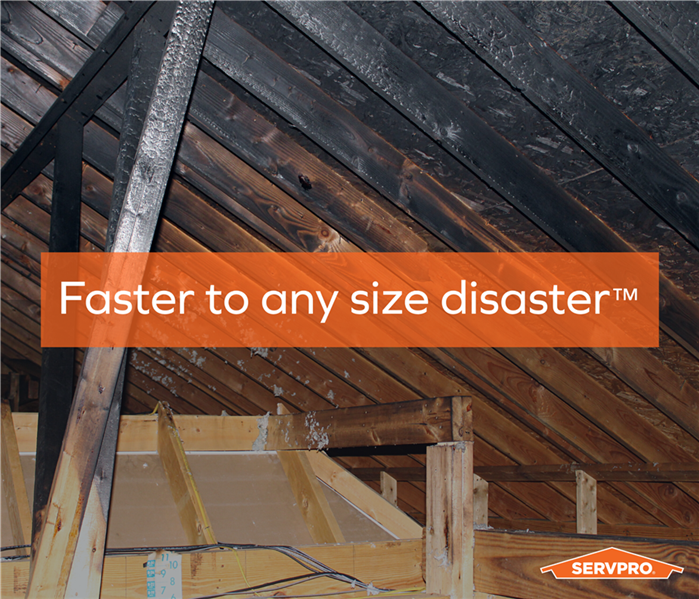Smoke and Soot Dictate Cleanup Practices After Fire Damage
3/6/2022 (Permalink)
 It is wise to contact a professional in the fire damage restoration industry, like SERVPRO of Lake Arlington at (817) 460-7766.
It is wise to contact a professional in the fire damage restoration industry, like SERVPRO of Lake Arlington at (817) 460-7766.
Professionals Describe the Different Types of Smoke
Suppose you ever suffer from a structural blaze inside your Lake Arlington home. In that case, it is always smart to consult a professional when going about cleanup and restoration.
A professional will know to use different chemicals and techniques when removing residues left behind, based on the smoke type. In most situations, smoke and the soils it leaves behind can be classified into one of the following four categories of smoke and soot damage. Knowing what type of smoke was present helps the technician pick the best method to remove soot residues on the various surfaces of your building materials and contents.
Category No. 1 - Dry Smoke
Most fires go through stages of creating both wet and dry smoke. However, usually fires will have more of one type than the other. Dry smoke is created by fast-burning, oxygen-rich burns. Dry smoke is also usually created when organic materials like wood, paper, or natural fabrics burn.
Category No. 2 - Wet Smoke
Whether a fire produces a majority of wet or dry smoke depends on the amount of oxygen present, the combustion rate, and the type of substance that is burning. When the fire is starved of oxygen and burns at a lower temperature, it produces wet smoke. Wet smoke is also created when synthetic materials such as rubber or plastic burn. Wet smoke usually adheres strongly to surfaces and is difficult to remove.
Category No. 3 - Protein Residues
Protein residues can be found any time products such as meat, poultry, or fish burn. These residues leave behind a yellow or amber discoloration, but they can sometimes be clear and hard to see on a surface. Protein residues leave behind strong odors making deodorization the biggest issue when dealing with them.
Category No. 4 - Fuel Oil Soot
Furnace puff-backs can create fuel oil residues that consist of dust particles from the ventilation system and fuel oils that did not burn all the way. This type of soot usually has a gray or black color and can consist of large or small particles. Often, the electrically charged ions form formations in corners that resemble spiderwebs and can smear readily if not vacuumed and sponged off correctly.
If a fire ever ignites inside your home, it is wise to contact a professional in the fire damage restoration industry, like SERVPRO of Lake Arlington at (817) 460-7766.




 24/7 Emergency Service
24/7 Emergency Service